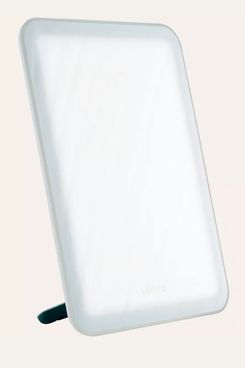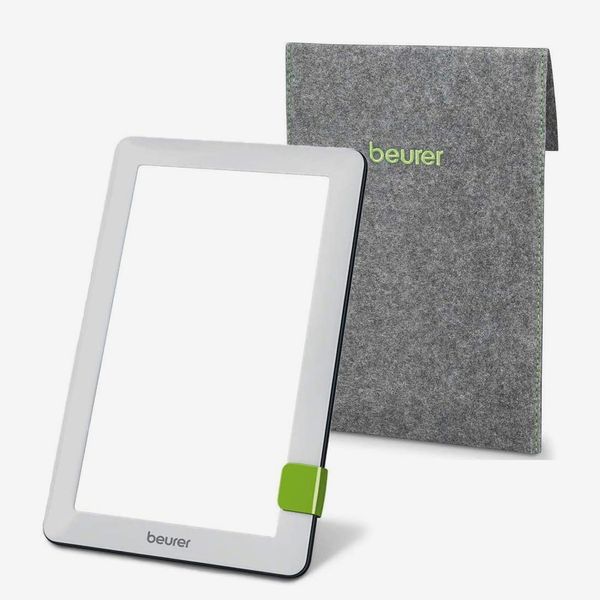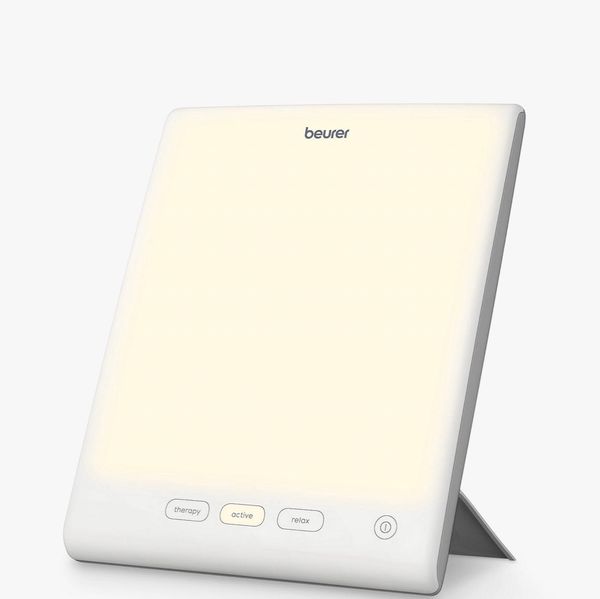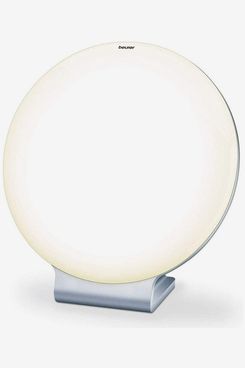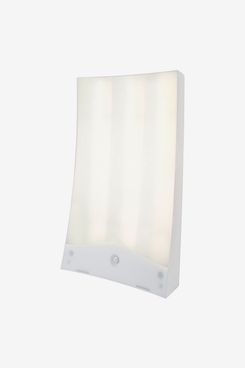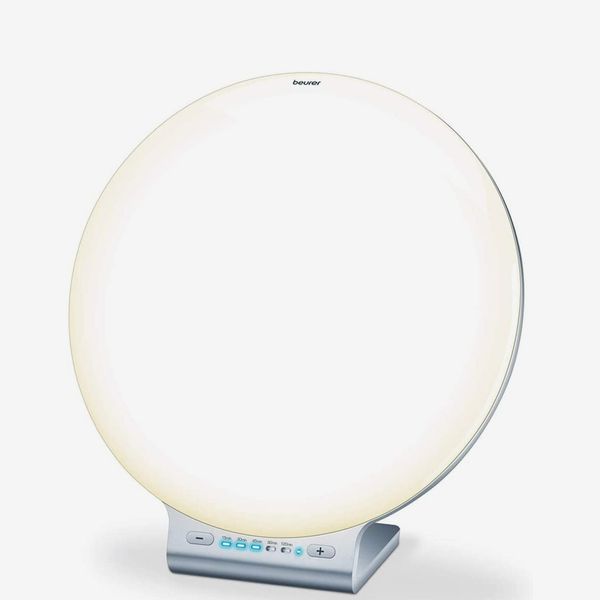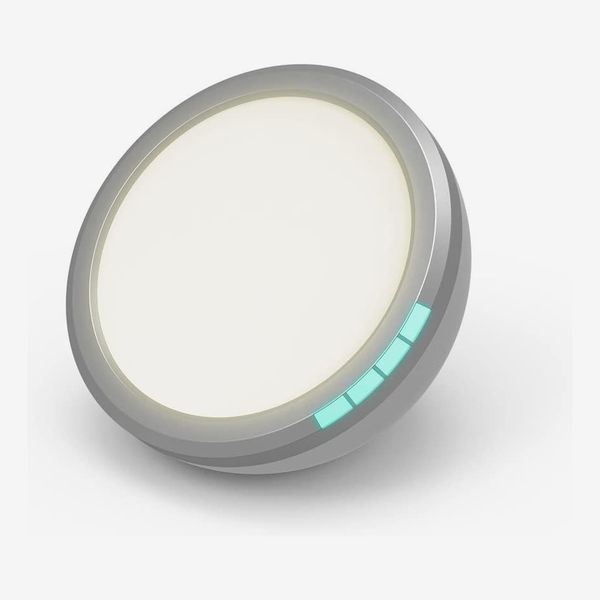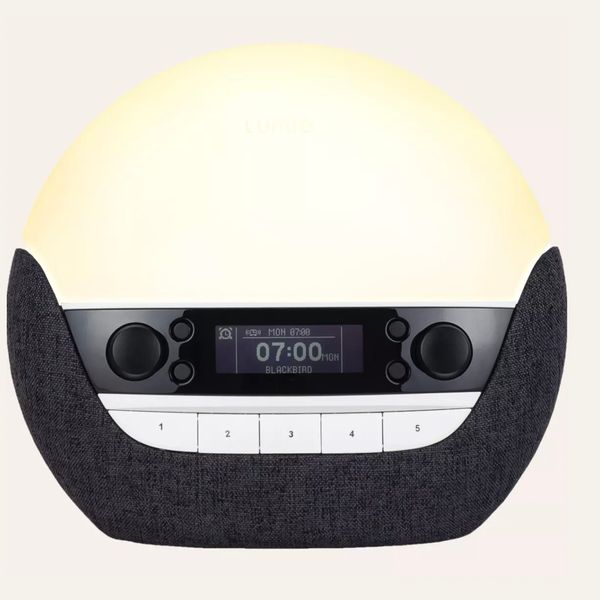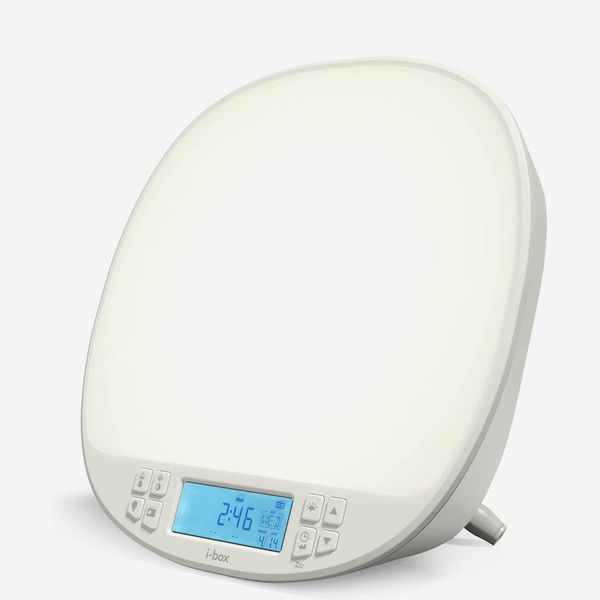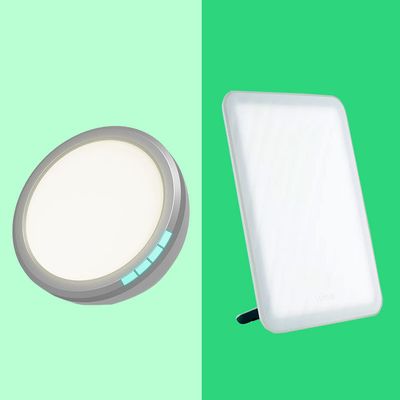
The dark days of winter may make you feel a bit gloomy — with cravings for comfort food and sleep — but if your seasonal symptoms are bad enough to interfere with your life, then you could be among the 3 in every 100 people in the UK who have seasonal affective disorder (SAD), according to the Royal College of Psychiatrists. SAD is a type of depression that comes and goes at a particular time of year. For most people who are affected, symptoms — including persistent low mood, lethargy, irritability, finding it hard to get out of bed, craving carbohydrates, and weight gain — come on in the winter and alleviate during the summer (although for some people, symptoms set in during the summer and clear up come winter).
If you think you might have SAD, you should speak to your GP or a therapist, advises counsellor and psychotherapist Lindsay George. The symptoms are very similar to depression, so it is important to get a proper diagnosis before starting treatment, which often includes a combination of lifestyle changes (including regular exercise and eating a balanced diet); talking treatments such as cognitive behavioural therapy, counselling, or psychotherapy; and antidepressant medication.
Some people with SAD may also wish to try light therapy, which involves sitting facing a special lamp designed to mimic sunlight. It’s thought these bright lights may improve symptoms by encouraging the brain to increase the production of the hormone serotonin, which affects your mood, while also reducing the production of another hormone called melatonin, which makes you sleepy.
However, the National Institute for Health and Care Excellence (NICE) cautions that the evidence for light therapy is as yet “uncertain,” as “only small, inconclusive trials have been carried out.” So if you are considering trying a SAD lamp, you should do so alongside support from your therapist or GP, who will also be able to advise you whether there is any reason exposure to very bright light may not be suitable for you (for instance, if you have certain eye conditions or are taking medication that increases your sensitivity to light).
Light therapy is not usually available on the NHS, so if you want to try it, you’ll need to buy a SAD lamp. To find out what you should be looking for, we spoke to five mental-health experts, including psychotherapists and psychiatrists, who say some of their clients have benefited from light therapy alongside talking treatments. “These lights really can help the person with their moods,” says Glenda Roberts, BACP accredited psychotherapist. “They can uplift them, help them to feel light again and invigorated.”
What should you look for in a SAD light?
As doctors and therapists, many of the experts did not want to endorse specific products, but they did provide guidance on the criteria a good SAD therapy light needs to meet. ”Look for lightboxes with an intensity of 10,000 lux — this means it’s at a level of brightness that’s been recommended by doctors,” says Fatmata Kamara, specialist nurse adviser for Bupa UK. “You’ll also know whether the light has a medical classification by looking at the packaging — somewhere on the box it will say that it’s been registered with the Medicines & Healthcare products Regulatory Agency (MHRA).”
To register with the MHRA, medical devices must be safe to use and meet certain standards. Light-therapy products may be marked as a Class I or Class IIa medical device. The classification takes into account the potential risks associated with medical devices, so products will be considered Class I if the user experiences minimal duration of light exposure (as with a sunrise alarm clock), or as Class IIa if users will be exposed to the bright light for longer.
“To make a product a ‘Class II medical device,’ the company should go through a certain registration and product validation process, so these devices usually have a higher price range,” says Dr Olga Runcie, consultant psychiatrist at BMI Albyn Hospital. Dr Runcie and Kamara both advise choosing a lamp that emits a bright white light and one that doesn’t emit UV radiation. Dr Runcie adds that “it is important to note that as these devices are free from UV light, they do not boost vitamin D level (people commonly assume that they do).”
But aside from that, which SAD light will be right for you comes down to personal preference. Lindsay George advises thinking carefully about how the light will fit into your lifestyle and home. Do you want one that can be moved from room to room or even popped in your bag and taken to work? Would you like it to have a timer? A sunrise function so it gradually warms up to full intensity? Roberts suggests you ideally research and trial three different lamps to “get a sense of what feels right for you” as “there’s no one product that will be suited to everyone.” So check out returns policies and ask suppliers about the option to try a product before buying. Always read the information leaflets included with your light, as they will detail how to use it as well as how long to use it for, which varies from model to model.
One last thing to note: If you (or the person you are buying this product for) suffer from SAD, you may be eligible to claim back or be discounted the cost of VAT on these lamps.
Best overall SAD lamp
New! You can now save this product for later.
Both Sharnade George, psychotherapist and founder of Culture Minds Therapy, and Dr Runcie recommend the brand Lumie, which offers a 45-day trial of its SAD lights. Slim yet sturdy, this Class IIa medical device is easy to transport between home and work (or to pack in your suitcase when travelling). The rubber-based stand simply slots into place to hold the lamp in either portrait or landscape position as it emits a UV-free cool white light. We think this lamp is a great option for most people, as not only does it meet all the requirements set out by the experts we spoke to, it also has a relatively large illumination surface for a portable lamp: 28 by 20 centimetres, around the size of a tablet, and so can provide 10,000 lux when sat 16 centimetres away. Lumie recommends you use this lamp for 30 minutes a day.
Best portable SAD lamps
New! You can now save this product for later.
Runcie also recommends Beurer as a brand whose products are registered with the MHRA. This extra-slim model comes with a neat grey storage pouch to keep it safe while being carried in your luggage. When you reach your destination, simply plug it into the mains, use the adjustable stand to hold it in either landscape or portrait position, and turn it on with the one-button control. This lamp is flicker-free and UV-free. Do bear in mind that the smaller illumination surface (20 by 12 centimetres) means you’ll need to sit closer to it to feel the benefits of 10,000 lux — Beurer recommends positioning it just ten centimetres away.
New! You can now save this product for later.
Unlike the above one-button controlled models, this UV-free light offers different settings, so as well being used as a SAD therapy lamp (with 10,000 lux at a distance of 20 centimetres), it can also be set to two other colour temperatures: Active — which emits 5,000 lux at a distance of 15 centimetres, intended to energise, and Relax — which emits 3,000 lux at a distance of 15 centimetres and is best used in the evening when you want to unwind. With a square 20-by-20-centimetre illumination surface, this lamp also features a fold-out stand, making it easy to set up in different locations.
Best desktop SAD light
New! You can now save this product for later.
This circular lamp is designed to be like a large vanity mirror (or indeed the sun). Its light surface area has a 24.6 centimetre diameter, which provides 10,000 lux when positioned 15 centimetres away from you. Beurer recommends you use this lamp for an hour each day to provide flicker-free and UV-free light at the touch of a button.
Best large SAD light
New! You can now save this product for later.
If you don’t want to sit with your SAD lamp very close to you, then you’ll need to opt for one with a larger illumination screen. The light from this Class IIa medical device is UV-free and provides a lux of 10,000 at 35 centimetres distance if used for 30 minutes or at an 80 centimetres distance when used for 60 to 120 minutes. With a screen measuring 50 by 31 centimetres, this lamp is too large to be carried far, but it does have an integral handle to make it easier to move between rooms or tuck into a cupboard when not in use.
Best multi-function SAD light
New! You can now save this product for later.
When not being used as a UV-free daylight therapy light, this Bluetooth-enabled lamp can also function as a mood light to create a cosy atmosphere in your home. Download the Beurer LightUp app to control it remotely via your phone and choose from 256 colours and ten brightness levels. The large circular illumination area has a 33-centimetre diameter and is medically certified to provide 10,000 lux at a distance of 10 centimetres. It features a timer that displays treatment times in 15-minute intervals.
Best wall-mounted SAD light
New! You can now save this product for later.
With a weight of 290 grams, this compact light is not only portable but can also be wall mounted or positioned on a tabletop using the built-in pull-down stand with adjustable angle. The experts we spoke to didn’t recommend the Lifelight specifically, but it does meet their requirements as it is registered with the MHRA as a Class IIa medical device, which can provide 10,000 lux. It has a timer so you can ensure you get the desired length of treatment each day. There is a sliding dimmer switch on the front, so the light can easily be adjusted if desired after treatment.
Best sunrise alarm clocks
New! You can now save this product for later.
Most sunrise alarm clocks, including this one, are not in fact SAD therapy lights — as the user is not intended to sit in front of the lamp for an extended period of time, so they cannot offer 10,000 lux. However, the Lumie Bodyclock is a Class I medical device, which Sharnade George recommends as it can help you start the day feeling energised and refreshed by waking you gradually with brightening light and “nice soothing sounds” (including classic birdsong, waterfall, treefrogs and white noise). Designed to minimise alerting blue light, it can also be set to a gradually dimming sunset mode to help you switch off in the evening. This alarm clock can tune into DAB/DAB+ radio or play music from a smartphone or other device via Bluetooth, from a USB flash drive, or from the auxiliary input.
New! You can now save this product for later.
It is rare to find a lamp that can provide UV-free 10,000 lux light therapy and also has a sunrise feature — meaning the light can be set to gradually brighten. Lindsay George recently bought this one for her daughter who finds it difficult to get out of bed in the morning. “The sunrise alarm was a real incentive for her,” she explains. “It slowly wakes you up while you’re getting the rays from the lamp itself.” It can also be set to sunset mode — in which it will gradually darken to help you drift off in the evening. Plus, it works as an FM radio and alarm clock, with an LCD display that shows the time, day, and date as well as weather forecast symbols.This lamp is not yet MHRA registered, but i-box is in the process of applying to become so.
The Strategist UK is designed to surface the most useful, expert recommendations for things to buy across the vast e-commerce landscape. Read about who we are and what we do here. Our editors update links when possible, but note that deals can expire and all prices are subject to change.
